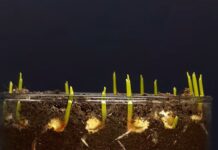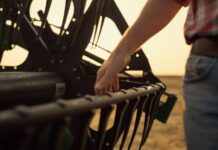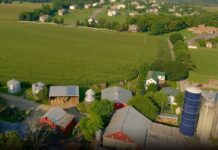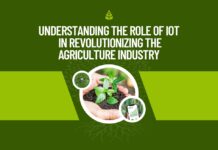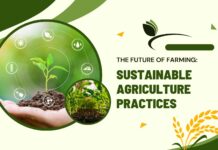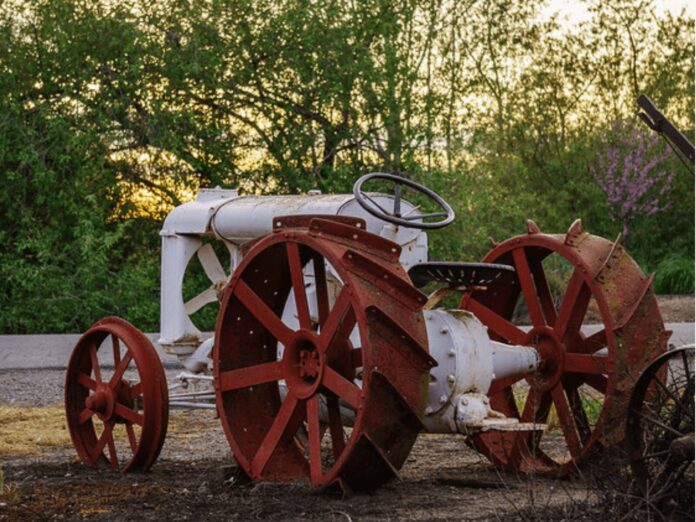
Agricultural machinery devices are used to cultivate and harvest crops. since ancient times, people used the tools to help them to grow and harvest crops. They used Agricultural tools to keep soil loosened and sharp to harvest the ripened crops. This Modification of early implements led to the development of small hand tools that are used in
small-scale gardening like hoe, rake, trowel. And large implements led to the development of large hand tools, such as grass shears, gardening toolsets, and pruners.
The most important of modern agriculture is the tractor. It provides many other implements and furnishes power for the operation of machines drawn behind the tractor. The tractors can also set up to drive to operate equipment such as feed grinders, pumps, and electric power generators.
Many types of implements have been developed for the activities in growing crops. These include planting, weeding, fertilizing, and combatting pests.
Check here for more on Tractor Equipment and AccessoriesCheck here for more on Tractor Equipment and AccessoriesCheck here for more on Tractor Equipment and AccessoriesCheck here for more on Tractor Equipment and Accessories
What is Agriculture Machinery?
Agricultural machineryAgricultural machineryAgricultural machineryAgricultural machinery is machinery used in farming for agriculture. There are many types of equipment used by farmers they are hand toolshand toolshand toolshand tools, power tools like tractors. This equipment is used in both organic and nonorganic farming. Now let’s get into details of farm machinery types, uses, and their importance.
Farm Machinery Importance, Uses, And Types
Tractors
The tractor is a farm vehicle. Agriculture implements to be mounted on the tractor and it may also provide a source of power if the implement is mechanized. Farm tractor is used for pulling and pushing agriculture machinery. It is used for plowing, tilling, disking, harrowing, and planting.
There are two types;
- Two-wheel tractor
- Tracked tractor or Caterpillar tractor
A cultivator is a farm implement for stirring and pulverizing the soil before planting. It also removes weeds and to aerate and loosen the soil after the crop has begun to grow.
Plough
A Plough is used for the initial cultivation of soil in preparation for sowing seedsowing seedsowing seedsowing seed and planting. The purpose of Ploughing is to turn over the upper layer of the soil. It bringing fresh nutrients to the surface and remains of previous crops, allowing them to break down. In modern use, a Ploughing field is typically left to dry out and then harrowed before planting.
Harrows
A Harrows is an implement for cultivating the surface of the soil. It is different in its effect on Plough and used for deeper cultivation. It is often used to carry out on fields for Ploughing operations. It provides a finer finish, for a good soil structure that is suitable for seeding and planting operations.
Check Here for Farm Disc HarrowsCheck Here for Farm Disc HarrowsCheck Here for Farm Disc HarrowsCheck Here for Farm Disc Harrows
Importance of Farm Machinery
1. The introduction of equipment with high-end technology has reduced the labor work.
2. It helps them to produce the required kind of goods in the quantity demanded, unlike the traditional days where humans and horses were excessively used.
3. Keep complete records of fieldwork done by various machines and the number of working days available for critical field operations. By knowing the average capacity of machines and the number of workdays available, a more effective job of selecting machinery is possible.
4. It has reduced the farming time with ample work done in the stipulated time.
5. In terms of cost, it helps farmers and corporate companies to economize capital and labor.
6. To expand operations, farmers can invest in machines & its maintenance instead of paying salaries to workers, thus hastening the production.
7. Farm machinery improves the quality of goods and boosts agricultural & food production in the market.
Types of farm machinery
The modern farmers used a vast range of equipment for agriculture purpose. The technical stuff and farm manning are higher in the yield.
- Land Processing
- Soil and Plant Fertilizing
- Harvesting and Transportation
Farm machinery used for soil cultivation
Cultivator: Cultivator equipmentCultivator equipmentCultivator equipmentCultivator equipment is a farm device for stirring and pulverizing the soil before planting or removing weeds and aerating and loosening the soil after growing. It is operated by a tractor and stirs the soil to a higher depth than the harrow (which is not normally powered). Many are fitted with hydraulic wings that fold to make it easier and safer to ride on the road. Different devices are used for gardening, but very small.
Cultipacker: A CultipackerCultipackerCultipackerCultipacker is a piece of farming equipment that crushes dirt clods, eliminates air pockets, and presses down small stones to create a smooth, firm seedbed. The term Cultipacker applies exclusively to ridged rollers, whereas either a smooth or a ridged roller can be referred to in the terms field roller or land roller. Many farmers find the terms to be mutually exclusive, but others regard the ridged as a field roller category.
Plough: In preparation for sowing seed, a plow or plow is used for initial soil cultivation. The key plowing role is to turn over the upper layer of the soil, bringing to the surface fresh nutrients. This aerates the soil and increases the retention of moisture. Usually left to dry out a plowed field in modern use and then harrowed before planting.
Rotary tiller: It is also referred to as a rotavator, revolving hoe, power tiller, or rotary plow. It is a motorized grower that uses spinning blades to work the soil. Rotary tillersRotary tillersRotary tillersRotary tillers are either driven by themselves or pulled behind a tractor as an extension.
Strip-till: Strip-till is a minimal tillage management method. This combines the soil drying and heating advantages of traditional tillage with the no-till soil-protecting advantages by disrupting only the portion of the soil comprising the seed line. This tillage is done with special tools and produces multiple trips, depending on the tillage tool used and the conditions of the field. Each strip-tilled row is typically around 8-10 inches wide.
Harrows: Harrows machineryHarrows machineryHarrows machineryHarrows machinery is used for ground surface cultivation. It is different from the plow that is used for deeper cultivation in its effect. Harrowing is often achieved by plowing operations on fields to meet the rough end. This harrowing’s main purpose is to break up lumps of soil and provide a finer finish, a good soil structure ideal for seeding and planting. Harrowing can be used after sowing to kill weeds and cover crops. There are three main types of harrows: spike harrows, drag harrows, and disc harrows.
Also, See The Best 5 Potting Soil for Herbs
Farm machinery used for planting:
Seed drill: This is a device for placing the seeds at a uniform rate and at a controlled depth with or without the arrangement to cover them with soil in a continuous flow in furrows.
This ensures even distribution of seeds. At the exact seeding rate and depth, the seed drillseed drillseed drillseed drill sows the seeds, ensuring that the seeds are covered by soil. This saves them from being eaten or dried up by animals as a result of sun exposure.
Broadcast seeder: A broadcast seeder or spreader or fertilizer spreader is a commonly used crop, lime, or fertilizer spreading tractor tool.
Seed cum fertilizer drill: Seed drillsSeed drillsSeed drillsSeed drills are equipped with an attachment to drop fertilizer; spread the fertilizer on the field evenly. It’s called a fertilizer drill seed material. Such a drill has a wide seed box that is lengthwise divided into two compartments, one for seed and one for fertilizers. Seed drill may be graded as (i) Drawn Bullock (ii) Drawn Tractor.
Farm Machinery used for fertilizing and pest control
Manure spreader: Manure spreaderManure spreaderManure spreaderManure spreader is also known as a muck spreader or a honey wagon is an agricultural tool used as a fertilizer for the spreading of manure over a field. Manure spreaders began as ground-driven devices that a horse or group of horses would pull out.
Slurry tank: A slurry tank is a vehicle with a tank and pump that can be used to fertilize the fields with slurry (a combination of manure and water). If we fertilize fields, at the end of the season we get more plants.
Sprayer: A sprayer is a device used to apply herbicides, pesticides, and fertilizers to farm crops. SprayersSprayersSprayersSprayers range in size from man-portable units (typical spray-powered backpacks) to tractor-related self-propelled units.
Farm Machinery types used for irrigation
Irrigation equipment: Varieties of irrigation equipmentirrigation equipmentirrigation equipmentirrigation equipment are used for irrigation, depending on the farm operator’s financing ability and the appropriateness of the method according to water sources.
Fire sprinkler system: A fire sprinkler system is an effective form of fire protection, consisting of water supplying a network, providing adequate pressure and flow rate to a water delivery piping structure connected to by fire sprinklers.
Also, See 10 Best Lawn Sprinkler Heads – 2024 Buying Guide
Centre Irrigation: Irrigation is usually the artificial transfer of water to the soil to help grow crops. It is mostly used for crop production in dry areas and in rainfall shortages, but to protect crops from frost. Irrigation is the opposite drainage procedure, which is the natural or artificial removal from a given area of the surface and sub-surface water.
Also, See The 5 Best Soil pH Tester – 2024 Buying Guide
Farm Machinery for Harvesting and threshing equipment
Equipment for harvesting is a mechanical device used to harvest. There are several harvesting machine types that are typically categorized by the plant. Below are some of the harvesting equipment used;
Combine harvester: A combine harvester is a tool that combines planting, threshing, and cleaning of grain crops. The main goal is plant planting, corn, soybeans, flax (linseed), oats.
Sickle: A sickle tool is a curved shaped, hand-held farming device that is usually used to harvest grain crops or cut grass for hay.
Mower: Mower is a plant or grass cutting tool. The mower can be powered by steam, operated by hand, or drawn by animals.
Reaper: Reaper is a tool used for ground-level cereal harvesting. Such reapers are powered either by the power tiller or by the tractor. The reaper worked on the tractor’s field strength varies from 0.2 to 0.4 ha per hour.
Conveyor belt: A conveyor belt is the carrying medium (often shortened to belt conveyor) of a conveyor belt structure. One of the major types of conveyor systems is a belt conveyor system. This system consists of two or more pulleys (sometimes called drums) with an endless loop of moving media and the conveyor belt revolving around them. One or both of the pulleys are powered, moving forward the belt and the material on the belt. The driven pulley is called the drive pulley, and the weak pulley is called the idler pulley.
Crop harvesting machine: The mechanical tool that is concurrently built to harvest forage crops grown in the upland or field and forms roll bale is called plant harvesting machinery. The system consists of moving, harvesting, and a part of the baler.
Vegetable harvesting machine: Most computers are now available for vegetable harvesting. But, among global vegetable farmers, these are quite popular.
That’s all about the styles of farm machinery, farm tools, farm equipment, and their uses.
See, Also Why is Agriculture Important and its Role in Everyday Life
Check For Farm Machinery Products on Amazon.comAmazon.comAmazon.comAmazon.com

